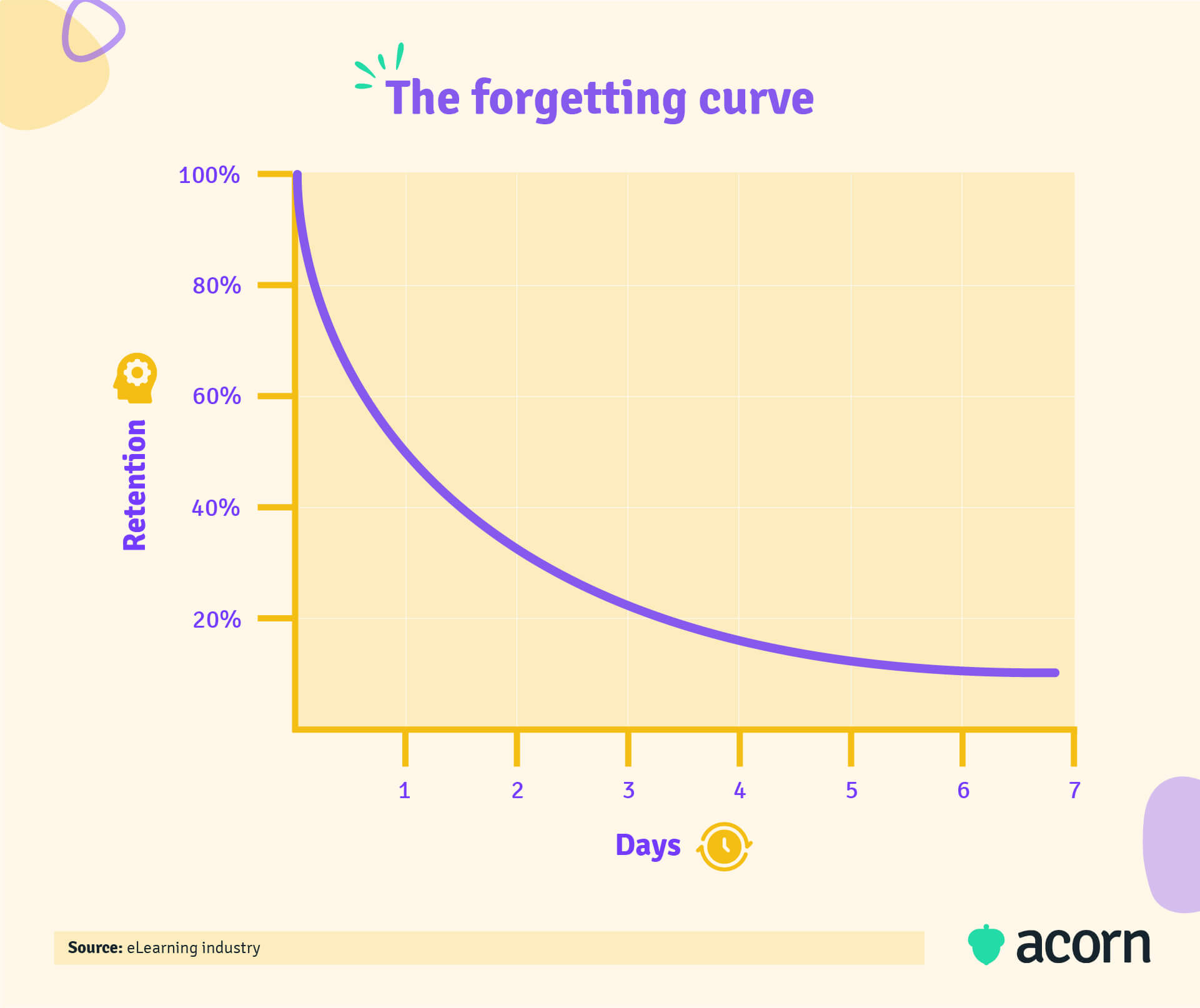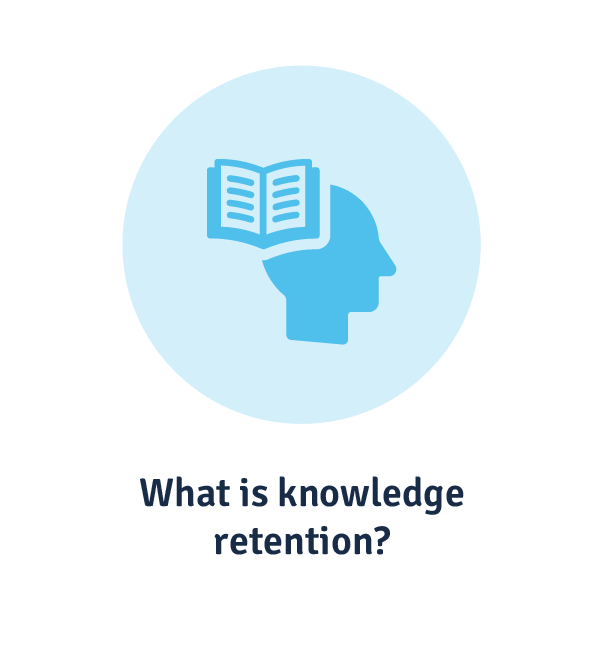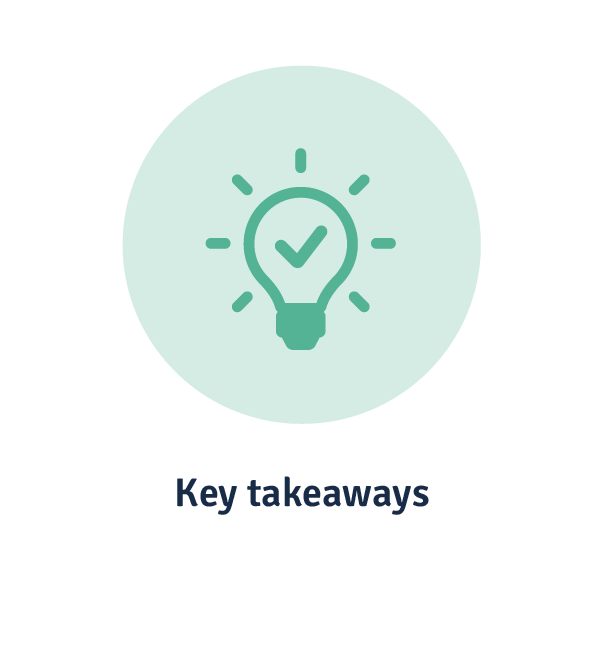In 2022, 46% of L&D professionals saw a bigger skills gap in their organisation compared to previous years, and leaders are worried about their current employees’ ability to achieve business goals. Training combats this, but the issue lies in learning effectiveness—that is, whether your employees actually retain anything they’ve learned.
It shows how well employees are able to perform their job with their new knowledge. This is why you should include knowledge retention in your L&D metrics.
In this guide, we’ll look at what prevents knowledge retention and what techniques you can use to build a strong knowledge retention strategy.
What does knowledge retention mean?
Knowledge retention is the process of absorbing and retaining information. This means committing learned information to long-term memory rather than short-term memory. In business, knowledge retention is important to improving an organisation’s bottom line and performance through the application of business-critical skills, behaviours and expertise learned through training.
Why knowledge retention matters
Knowledge retention is important to ensure that your business has a competitive advantage, by arming employees with business-critical knowledge. These are the capabilities that enable your workforce to successfully drive business performance and company strategy, which is why it’s crucial that your employees can retain and recall the necessary skills, behaviours and expertise.
The fact is that the more knowledge your employees retain, the more knowledge your organisation retains. Look at it this way: If your employees leave, taking their knowledge and expertise with them, your business doesn’t have the critical knowledge it needs to succeed. And if those employees stay but don’t have any knowledge or expertise, your business is in the same position but with added financial drain and productivity lag.
But the better your knowledge retention strategies, the greater productivity levels are. (Think lowered onboarding and time to proficiency periods.) Plus, once your employees are capable and performing productively in their roles, there’ll be fewer mistakes made that require micromanaging from leaders.
Of course, as companies grow and the industry changes, businesses start to expand and adapt their company knowledge-base in response. And this is where training comes in, requiring your employees to build on and learn new concepts and processes. Knowledge transfer becomes easier and more effective when you deliver them through knowledge systems like a performance learning management system (PLMS), which can reach a large audience within your business, and measures the prevalence of knowledge retention after learning.
How does it do this? It links learning with performance, which legacy learning management systems don’t do. When employee performance increases as a result of training, you know that knowledge retention is happening. Here at Acorn, we’ve pioneered the first ever PLMS to link learning with performance management for this very reason: To drive knowledge retention with built-in knowledge retention strategies.
What stops knowledge retention from occurring?
Providing training to your employees is one thing, but ensuring they actually retain any of the training content is another. There are several factors that negatively impact employees’ ability to retain key knowledge from training activities, such as:
- The forgetting curve
- Overlearning
- Closed-loop vs open-loop learning
- Methods of learning and evaluation
- Conditions of training
- Level of competency
- Lack of learning culture.
The forgetting curve
The forgetting curve, or Ebbinghaus’ Epiphany, shows how knowledge is lost at an almost exponential rate over time if you aren’t putting it to use. It comes from German psychologist Hermann Ebbinghaus’s study of the accuracy of human memory over time.

Essentially, you can’t have long-term retention of information if you don’t continue to practice the information you learn. Ebbinghaus identified two causes behind this:
- The strength of the memory. A person is more likely to remember “strong” memories over “weak” ones. In terms of learning, this refers to meaningful lessons and timely, relevant information to their unique job role and its challenges.
- The time since information was learned. Learners forget up to 90% of the content learned in training within the first month. This is why simply providing a one-time training course doesn’t necessarily guarantee knowledge retention.
Overlearning
Overlearning is overwhelming. It’s providing more learning than is needed to grasp new concepts to the right level of proficiency. The truth is there’s only so much new knowledge a person can take in at once, and providing too much information and too many potential methods and solutions leads to two possibilities:
- Not being able to retain any of the information to a satisfactory level.
- Not being able to choose which method or solution is the right one for the moment.
Closed-loop vs open-loop learning
The form the learning course you provide takes is important to your employees’ ability to retain knowledge. Think about closed-loop or open-loop tasks. Closed-loop learning involves providing feedback, knowledge sharing, discussing strategies and objectives and building more effective training (and therefore greater knowledge retention) through a continuous dialogue between participants and instructors. In other words: Bidirectional knowledge flow.
On the other hand, open-loop learning does not involve feedback, and therefore lacks context. This type of learning task is harder for employees to retain because they aren’t really engaging with the material, nor are they able to play an active role in the improvement of the material in real time, impacting learner engagement, and, therefore, the retention of knowledge.
Methods of training and evaluation
Similarly to the type of learning experience you set, the type of training you provide can also encourage knowledge retention—or do the opposite.
The job your learning program is tailored to will affect which kind of training is best. For example, on-the-job or practical training is more likely to be retained than one-time instructor-led training or one-time assessments (which normally take place some time after the course, raising the issue of the retention interval again).
Choosing the right method of training and training evaluation for your learning will encourage employees to engage in the learning, and thus improve knowledge retention.
Conditions of training
When your learning course is divorced from the reality of everyday life, it’s going to be difficult for your learners to retain knowledge. It also makes it difficult for them to draw on techniques from their training when the real-life situation they need answers for is nothing like the hypothetical situations posed in their learning experience.
To combat this, you need to ensure your learning is relevant to your employees’ everyday life in the workplace. We’ll talk more about the importance of having relevant learning content below.
Level of competency
Ebbinghaus also found that the rate at which people forget their learning is reduced each time they review their learning materials. This means people who know a bit about a topic—that is, people who have competency—have an easier time retaining new and complex information on it. Those with little knowledge or ability in the subject matter have more difficulty, because they tend to get overwhelmed by the number of new concepts they’re faced with at once.
Lack of learning culture
Employees who rate their company culture highly are 25% more likely to be happy and engaged at work, meaning that they’ll be more likely to be productive. But, if your workplace lacks a supportive learning culture, you end up with a lack of motivation and morale throughout your workforce. The more consistent employees are with learning, the more it’s a habit you can reinforce in your workforce rather than a disruptive initiative you have to try and introduce.
5 knowledge retention strategies
The right knowledge retention strategy can drive more effective learning in your company. So what are the techniques and knowledge retention tactics that encourage learning retention throughout the learning process? We’ve identified five different techniques you can implement as part of your company’s knowledge retention strategy.
1. Include gamification
Gamification is the implementation of game-like features in learning to encourage learners to engage with the content. It builds learning around a recognition and “reward structure” by offering competition-like activities such as leaderboards, challenges and levels to compete against other employees.
Gamification is advantageous on three fronts.
- Combating people’s ever-shrinking attention spans.
- Offering more digestible, bite-sized content that employees can access when they like.
- Encouraging employees to repeatedly engage with content.
The thinking is that the more they engage in short bursts and on their own terms, the more likely employees are to truly absorb and retain the critical knowledge you’re putting in front of them. Plus, it can “reward” employees with badges for their efforts, encouraging learners to access learning again and again.
2. Reinforce at regular intervals
This is how you combat the forgetting curve: With the spacing effect, or spaced repetition. This involves giving your employees repeated exposure to learning materials, which makes knowledge retention more likely to occur and reduces the risk of the retention interval.

The idea is to provide ongoing learning, delivered at regular intervals, before your employees have a chance to forget critical information. This could start with your initial training session, followed by an online guided learning course, on-the-job training and experience, and finally, a chance for reflection or follow-up questions to address any knowledge gaps that may remain.
Having constant repetition as part of the learning process eventually reduces the curve for two reasons:
- More and more knowledge is retained and committed to long-term memory.
- People lose learned information at a slower rate when they have more long-term retention.
3. Align content with learner needs
Your learners need to have a reason to care about their training in order to be engaged with it, let alone retain information.
So, you need to make sure your employees see the relevance of your training programs to their job. Like we said before, employees are 25% more likely to be happy and engaged at work when they receive development opportunities. And, we know that workers like to have a sense of purpose when it comes to their jobs, to the point it can even reduce attrition and turnover.
Aligning your training with specific job roles and capability gaps makes training activities more tailored and relevant to your business—and employee—needs. Not only does this increase employees’ sense of purpose, but it also creates more impactful L&D for your business.
4. Make learning readily available
Keeping your training material locked up tight will just demotivate and dissuade your employees from seeking it out, but making it easily accessible within knowledge systems means learners can make repeat visits to training materials as they see fit, improving the potential for knowledge retention. This also enables microlearning or learning in the flow of work, which allows your employees to access bite-sized learning throughout the day.
On top of this, it’s important to design learning that only incorporates the essentials and removes the rest. This reduces the cognitive load on your learners and allows them to absorb and understand information better.
5. Encourage reflection
Ebbinghaus found that information was better retained the more it was reviewed, so you should create opportunities for your employees to reflect on what they’ve learned to help with this. These opportunities could include self-assessments in which participants evaluate themselves and their actions, performance, and expertise following their training course.
This also allows your employees a chance to create action plans going forward. These will be activities to perform when they return to their everyday tasks, which will help to continue retention.
Key takeaways
Knowledge retention is an important metric used to measure the efficacy of learning content, because it’s essential to building the workforce of the future and delivering on your business strategy.
You can do the work to make your training more likely to drive knowledge retention amongst your workforce. Keep in mind the forgetting curve and how to prevent it with ongoing learning. Making use of our five knowledge retention strategies:
- Including gamification
- Reinforcing at regular intervals
- Aligning content with learner needs
- Make learning readily available
- Encouraging reflection.
These will ensure your business is well on track to building a capable workforce with the ability to meet organisational outcomes.
Related Reads on This Topic

The 5 Best Benefits of Employee Training and Development in the Workplace
We look at why is it important to equip your employees with the resources to build and expand their knowledge in the workplace…

How to Use Effective Knowledge Management Systems to Support Continuous Organisational Capability Building
Learn how knowledge management systems ensure mission-critical capabilities are readily captured, stored and made accessible…

What is Mobile Learning and Why Is It Important in Employee Training?
Learn how mobile learning can improve employee training by making it more convenient, engaging, and effective…




